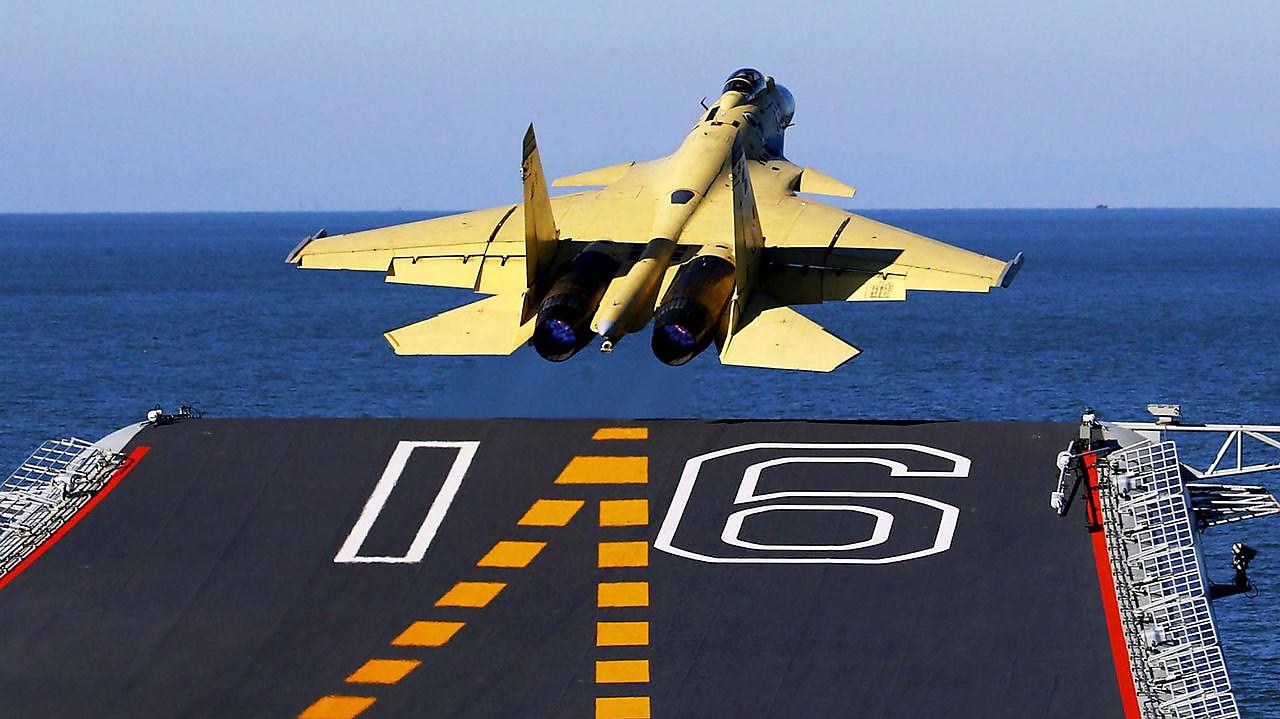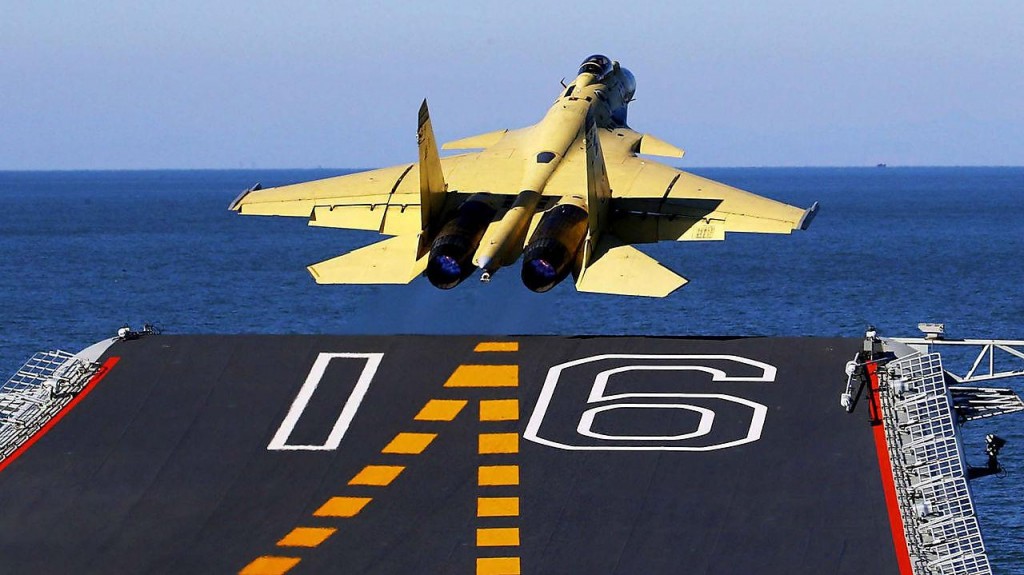Serious limitations about the operational capabilities of China’s first aircraft carrier was revealed by the state broadcaster China Central Television (CCTV) on May 2.
According to the CCTV although the Chinese Navy aircraft carrier can carry 24 Shenyang J-15 “Flying Shark” fighters the aircrafts cannot strike ground targets because it is impossible to take off with a full payload.
The explanation for this problem is that the Chinese aircraft carrier Liaoning (CV 16) does not have a catapult to launch the aircrafts but relies on its ski-jump ramp. Without the catapult the Shenyang J-15 ‘Flying Shark’ cannot take off with full military load for strike operations, because they are too heavy and the ski-jump ramp does not help the aircraft to take off.
Therefore the Shenyang J-15 ‘Flying Shark’ can be used only for missions against aerial targets and probably light attacks. The Chinese aircraft can carry up to eight PL-12 (180kg) air-to-air missiles and up to four PL-9 (115kg) air-to-air missiles or two YJ-83/C-803 anti-ship missiles and two PL-9 air-to-air missiles.
Practically the Shenyang J-15 ‘Flying Shark’ due to the limitations of the ski-jump ramp of the aircraft carrier Liaoning (CV 16) can’t carry more than 2 tons of missiles and munitions.
On the other hand, the American aircraft carriers can launch, thanks to their catapults, aircrafts carrying full military and fuel payload, allowing them to hit ground targets in long distance.
In addition to the problem mentioned above the pilots of the Shenyang J-15 ‘Flying Shark’ have to deal with another more serious issue. The take-off and landing zones of the Liaoning’s 300 meter long flight deck, are overlapping with each other.
This means that the pilots and the carrier crew must be extremely careful, while more time should be taken to send out and bring back aircrafts adding more limitations to the operational use of the 24 Shenyang J-15 ‘Flying Shark’ that Liaoning (CV 16) is carrying.


